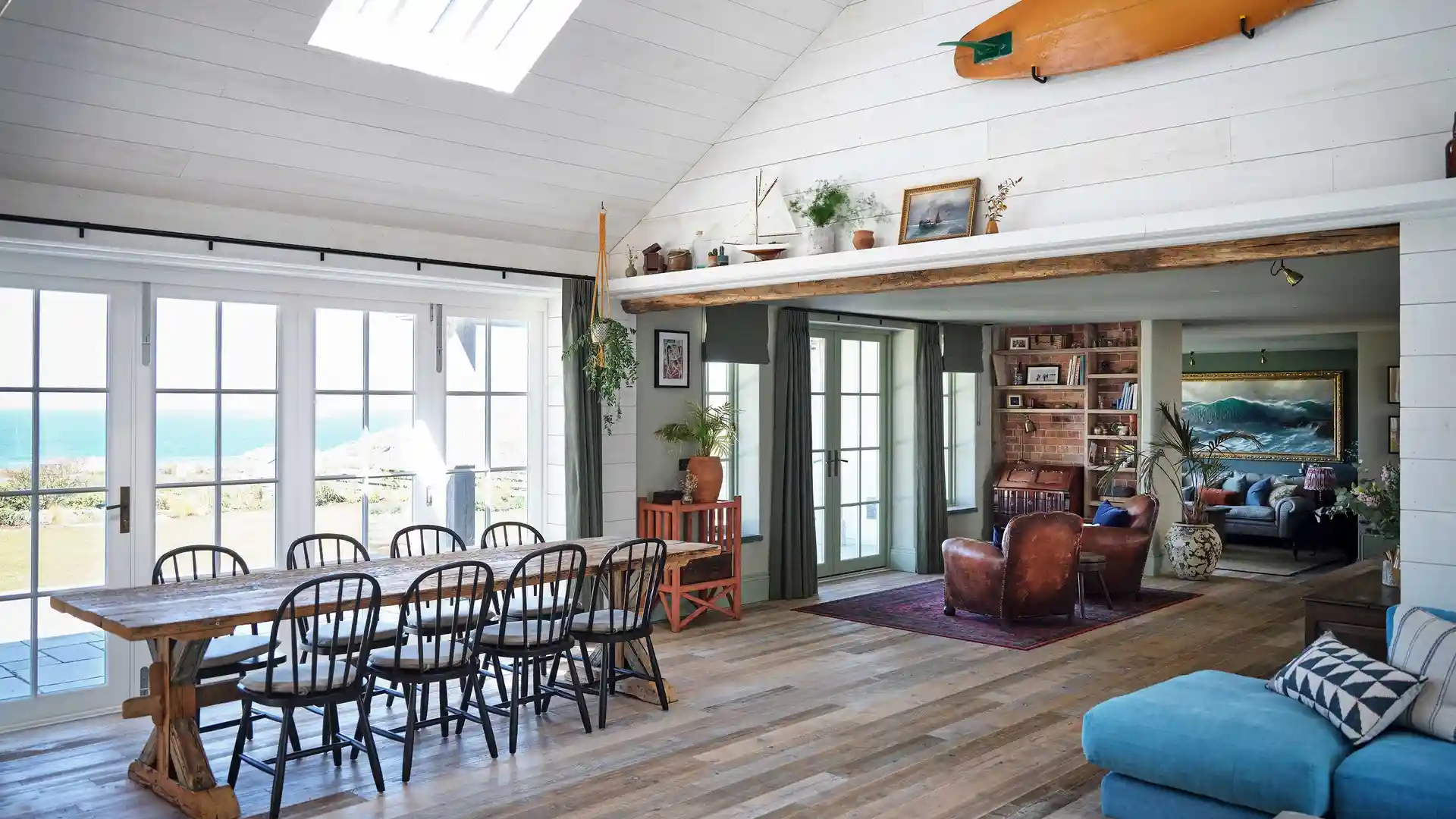Ceilings play a crucial role in defining the aesthetic and ambiance of a space. Among the various types of ceiling designs, the flat ceiling stands out for its timeless elegance and versatility. Characterized by its smooth, uninterrupted surface, the flat ceiling offers a clean and contemporary look that complements a wide range of architectural styles and interior designs. Let’s delve into the features, benefits, and applications of flat ceilings in interior design.
Features of Flat Ceilings:

Flat ceilings, also known as smooth ceilings or level ceilings, have a uniform surface without any visible texture or design elements. They are typically constructed using drywall or plasterboard and finished with a smooth coat of paint. The absence of texture or ornamentation creates a sleek and understated appearance that emphasizes clean lines and simplicity. Flat ceilings can be installed at various heights, ranging from standard ceiling height to higher ceilings, for a more spacious and open feel. They can also be combined with architectural features such as recessed lighting, crown molding, or ceiling beams to add visual interest and dimension to the space.
Benefits of Flat Ceilings:
- Timeless Elegance: Flat ceilings exude a sense of timeless elegance that transcends trends and fads. Their clean and minimalist aesthetic enhances the overall design of a space, creating a sophisticated backdrop for any style of décor.
- Versatility: Flat ceilings are incredibly versatile and can be adapted to suit a wide range of design preferences and architectural styles. Whether you prefer a modern, contemporary, traditional, or transitional look, flat ceilings provide a neutral canvas that can be customized to fit your vision.
- Illusion of Height: In rooms with low ceilings, flat ceilings can create the illusion of greater height and spaciousness. By eliminating visual distractions and creating a seamless surface, flat ceilings draw the eye upward, making the room feel larger and more expansive.
- Ease of Maintenance: Unlike textured ceilings, which can trap dust and debris, flat ceilings are easy to clean and maintain. A smooth surface allows for quick and efficient dusting or wiping, helping to keep the space looking fresh and pristine with minimal effort.
- Acoustic Properties: Depending on the construction materials and techniques used, flat ceilings can offer excellent acoustic performance, minimizing sound transmission and improving overall comfort in the space. Additional soundproofing measures, such as insulation or acoustic panels, can further enhance the acoustics of flat ceilings.
Applications of Flat Ceilings:
- Residential Spaces: Flat ceilings are a popular choice for residential interiors, including living rooms, bedrooms, dining areas, and kitchens. Their clean and understated appearance complements various architectural styles and interior design themes, from sleek modern apartments to cozy traditional homes.
- Commercial Spaces: In commercial settings such as offices, retail stores, and restaurants, flat ceilings create a professional and polished environment that enhances the overall customer experience. They provide a versatile backdrop for branding, signage, and lighting, allowing businesses to create a cohesive and inviting atmosphere for their clients and customers.
- Public Spaces: Flat ceilings are also commonly used in public spaces such as lobbies, corridors, and event venues. Their clean and streamlined appearance contributes to a sense of openness and sophistication, making them ideal for high-traffic areas where aesthetics and functionality are equally important.
- Specialized Environments: In specialized environments such as hospitals, schools, and laboratories, flat ceilings offer practical benefits in terms of hygiene, maintenance, and functionality. Their smooth surface is easy to clean and disinfect, making them ideal for environments where cleanliness and sanitation are paramount.
Design Considerations for Flat Ceilings:
When incorporating flat ceilings into interior design projects, several factors should be considered to ensure optimal results:
- Ceiling Height: The height of the ceiling will influence the overall look and feel of the space. Higher ceilings can create a sense of grandeur and spaciousness, while lower ceilings may benefit from additional lighting and strategic design elements to enhance the perception of height.
- Lighting: Proper lighting is essential for showcasing the beauty of flat ceilings and illuminating the space effectively. Consider incorporating recessed lighting, pendant lights, or track lighting to highlight architectural features and create visual interest.
- Color and Finish: Choose paint colors and finishes that complement the overall design scheme and desired ambiance of the space. Lighter colors help reflect natural light and make the room feel larger, while darker shades add depth and drama to the space.
- Architectural Details: Consider incorporating architectural details such as crown molding, trim, or ceiling beams to add texture and dimension to flat ceilings. These decorative elements can enhance the visual appeal of the space and create a sense of architectural interest.




